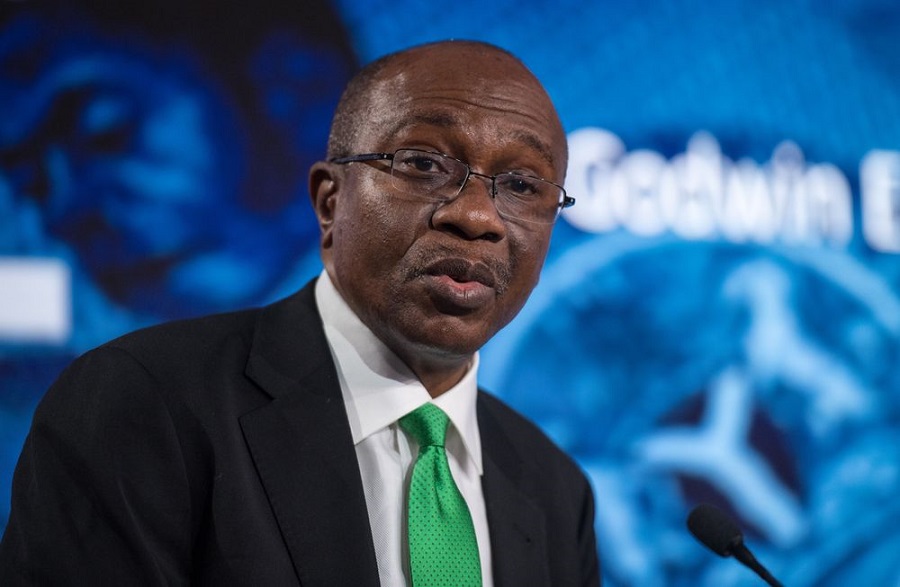The Central Bank of Nigeria (CBN) has removed the exchange rate of N379/$1 from its website homepage conforming with the bank’s policy that the NAFEX rate is now the default reference exchange rate for official and legitimate transactions.
A check by Nairametrics confirms it has been removed while sources within the CBN also confirmed it has been officially removed.
Since the Central Bank last adjusted the exchange rate in August 2020, it has retained the exchange rate of N379/$1 on its website homepage which in the past, represented the official exchange rate. The exchange rate displayed on the website has historically been referenced as the official exchange rate of the country.
However, all government transactions since 2021 have been converted using the prevailing exchange rate at the official NAFEX window confirming that the erstwhile official exchange rate of N379/$1 is dead.
READ: Banks’ assets under strain after naira depreciation
NAFEX is the official exchange rate
Nigeria operates multiple exchange rate windows ranging from the I&E (NAFEX) window where forex is traded between exporters, investors and purchasers of forex, the SMEIS window where forex is sold to importers and the BDC window which is where forex is sold to retailers. Several calls have been made both locally and from abroad to get the CBN to unify the multiple exchange rates.
Sources within the apex bank, however, informed Nairametrics that the official exchange rate recognized for transactions between parties has always been the NAFEX rate. They also claim this is the exchange rate used by the Federal and State Government when monthly allocations are shared.
READ: Naira falls further at NAFEX as external reserves loses $323 million in 11 days
Back in March, Finance Minister Zainab Ahmed reportedly informed newsmen that the Nigerian Government had adopted the NAFEX exchange rate as the official rate of conversion for FAAC allocations. However, foreign news media interpreted the information as an admission that the country was now adopting a flexible exchange rate system.
However, CBN Governor, Godwin Emefiele denied the claims of a flexible exchange rate insisting that Nigeria still operates a managed float. Emefiele debunked the claims as ‘faulty reporting’, stating that Nigeria still operates a Managed Float exchange rate. He further explained that the managed float is a policy that allows the CBN to watch the market operations and intervene when necessary.
Also, back in March, Nigeria’s Vice President, Yemi Osinbajo told attendees at a Webinar organized by British foreign policy think tank Chatham House, that the government uses the NAFEX rate although that was not to say that the currency had been floated.
READ: CBN Naira 4 Dollar Scheme; A subtle devaluation?
“To the questions around whether we’re just going to float the currency, what the finance minister said is that payments for federal allocation will use the … market rate. The federal allocation account is the account where funds go, funds that are shared between the federal and the state governments. It is with respect to the federal allocation account that the minister of finance said that the … market rate will be used,” Osinbajo clarified.
Is CBN’s exchange rate removal a devaluation of the Naira?
The removal of the now-defunct N379/$1 exchange rate from the website is not a devaluation or depreciation of the naira. It is simply an administrative action by the managers of the website of the central bank to conform with the reality that the market, government and all stakeholders have known for over 9 months; Nigeria’s official exchange rate points to the NAFEX.
Anyone conducting any business involving foreign exchange in Nigeria will have to quote the prevailing NAFEX exchange rate as the official exchange rate.
Whilst this rate is market-determined, it is still not a flexible rate or completely market-determined because the CBN intervenes occasionally thereby influencing the rate discovery on any given day.
READ: CBN and cryptocurrency ban
Nevertheless, this rate is the closest to a market-driven exchange rate (at least officially) and it is referenced by both the private and public sector for official transactions.
Despite the removal, Nigeria continues to operate multiple exchange rate windows whilst the disparity between the parallel market and the official rates remains wide. Recently, the central bank extended indefinitely its naira 4 dollar scheme allowing Nigerians to receive diaspora remittances in dollars in addition to a N5 bonus per dollar remitted.
READ: CBN, First Bank on collision course over removal of MD/CEO
Nairametrics does not expect the central bank to devalue the currency the way it did in the past. Whilst it continues to heavily influence the NAFEX window, the exchange rate in that window is unlikely to remain static again and will change frequently as it responds to the forces of demand and supply.
The NAFEX rate has closed from as low as N393/$1 to about N411/$1 throughout 2021 (it closed at N410.25/$1 on December 31, 2020). The exchange rate has also hit an all-time high intraday rate of N437/$1 on the 7th of May 2021, meaning some people have transacted at the rate.
